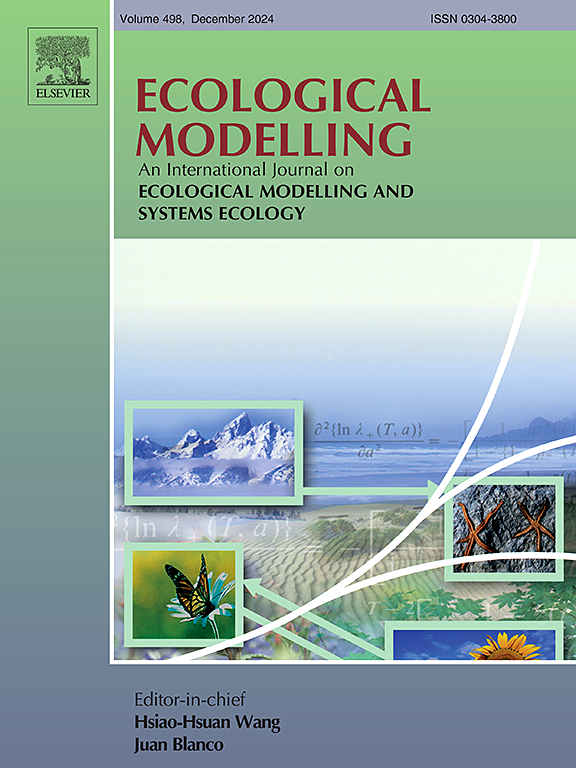Ecological role of marine mammals in the Magellan Strait: Insights from trophic modeling
IF 2.6
3区 环境科学与生态学
Q2 ECOLOGY
引用次数: 0
Abstract
Predators, such as marine mammals, impact the structure and functioning of marine communities. Due to their energy requirements, the wide variety of prey and the diversity of ecological niches they occupy, these organisms exert effects on diverse ecosystems. To evaluate the ecological role and trophic impact of the marine mammals in the Magellan Strait, Chile, we built a food web model using the Ecopath software. In this system, marine mammals occupied the third and fourth trophic levels and fed on prey from 20 functional groups, from zooplankton (i.e., sei whales, dolphins) to sea lions and seabirds (i.e., killer whales). Killer whales played the ecological role of key species in this ecosystem, potentially controlling the biomass of large predators and explaining 100 % of their mortality caused by predation. This potential control favored a biomass increase of fish such as salmon (52 % of their biomass), silverside (45 %) and Patagonian robalo (42 %). South American sea lions had a high trophic impact on the ecosystem groups’ biomass, being a significant predator of salmon (76 % mortality). The results support the hypothesis that humpback whales are the main consumer of Fuegian sprats and squat lobsters, with 43 % and 40.7 % of the total prey consumption, respectively. Trophic generality significantly and directly correlated with the trophic level of consumers (t = 5.92; r = 0.78, p < 0.001), demonstrating that high trophic level organisms feed on a greater prey diversity. Trophic vulnerability and trophic level presented a significant inverse correlation (s = 3883.2; ρ = -0.69; p < 0.001), indicating that functional groups at higher trophic levels had either few or no predators in the Magellan Strait ecosystem. The results do not allow us to conclude that higher trophic-level organisms have a greater impact on the food web. We suggest that the trophic impact is related to multiple factors like predator biomass, feeding habits and prey biomass consumption in a particular system. This study is the first model to evaluate the ecological role of marine mammals in the food web of the Magellan Strait, Chile.
求助全文
约1分钟内获得全文
求助全文
来源期刊

Ecological Modelling
环境科学-生态学
CiteScore
5.60
自引率
6.50%
发文量
259
审稿时长
69 days
期刊介绍:
The journal is concerned with the use of mathematical models and systems analysis for the description of ecological processes and for the sustainable management of resources. Human activity and well-being are dependent on and integrated with the functioning of ecosystems and the services they provide. We aim to understand these basic ecosystem functions using mathematical and conceptual modelling, systems analysis, thermodynamics, computer simulations, and ecological theory. This leads to a preference for process-based models embedded in theory with explicit causative agents as opposed to strictly statistical or correlative descriptions. These modelling methods can be applied to a wide spectrum of issues ranging from basic ecology to human ecology to socio-ecological systems. The journal welcomes research articles, short communications, review articles, letters to the editor, book reviews, and other communications. The journal also supports the activities of the [International Society of Ecological Modelling (ISEM)](http://www.isemna.org/).
 求助内容:
求助内容: 应助结果提醒方式:
应助结果提醒方式:


